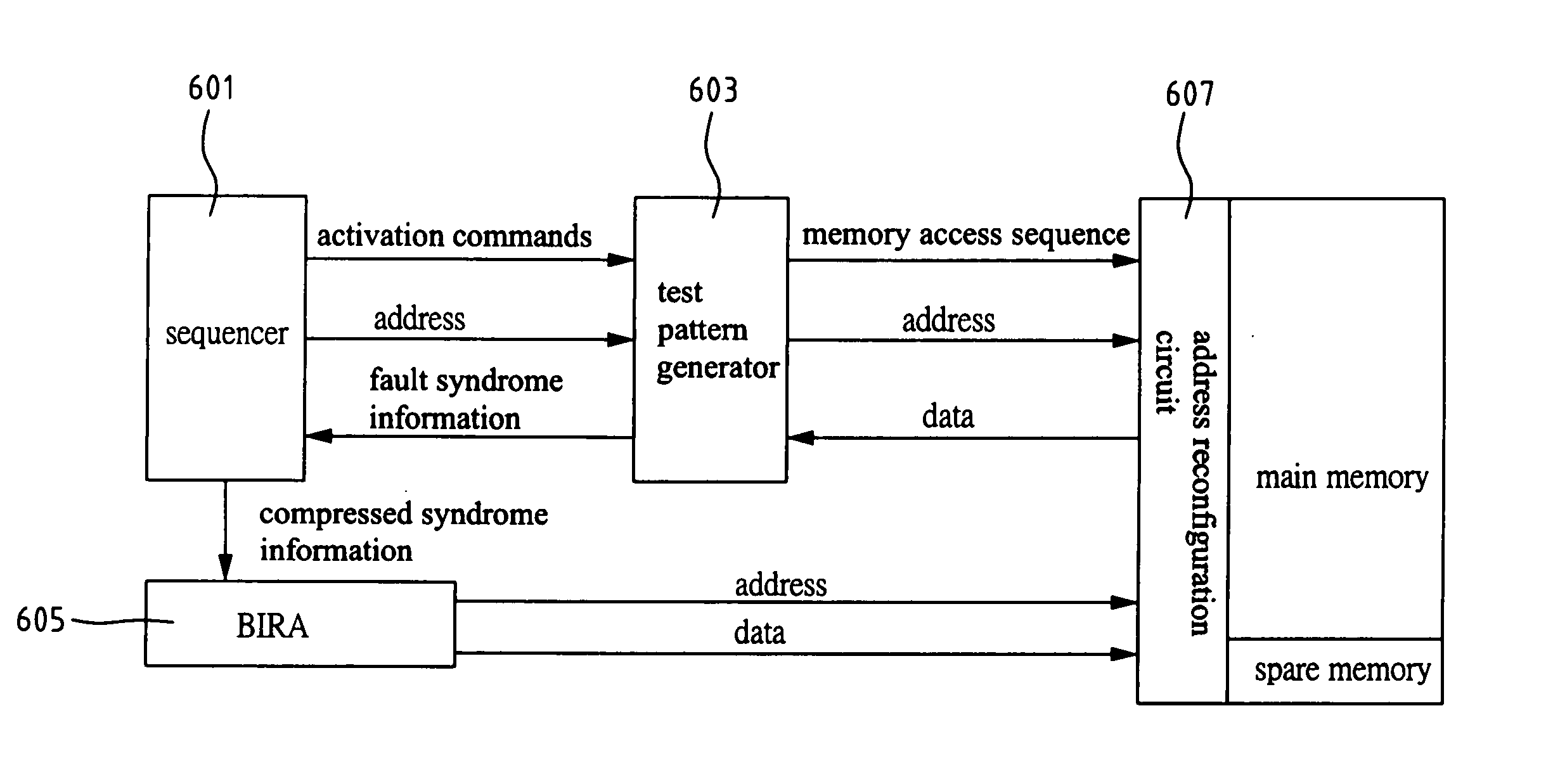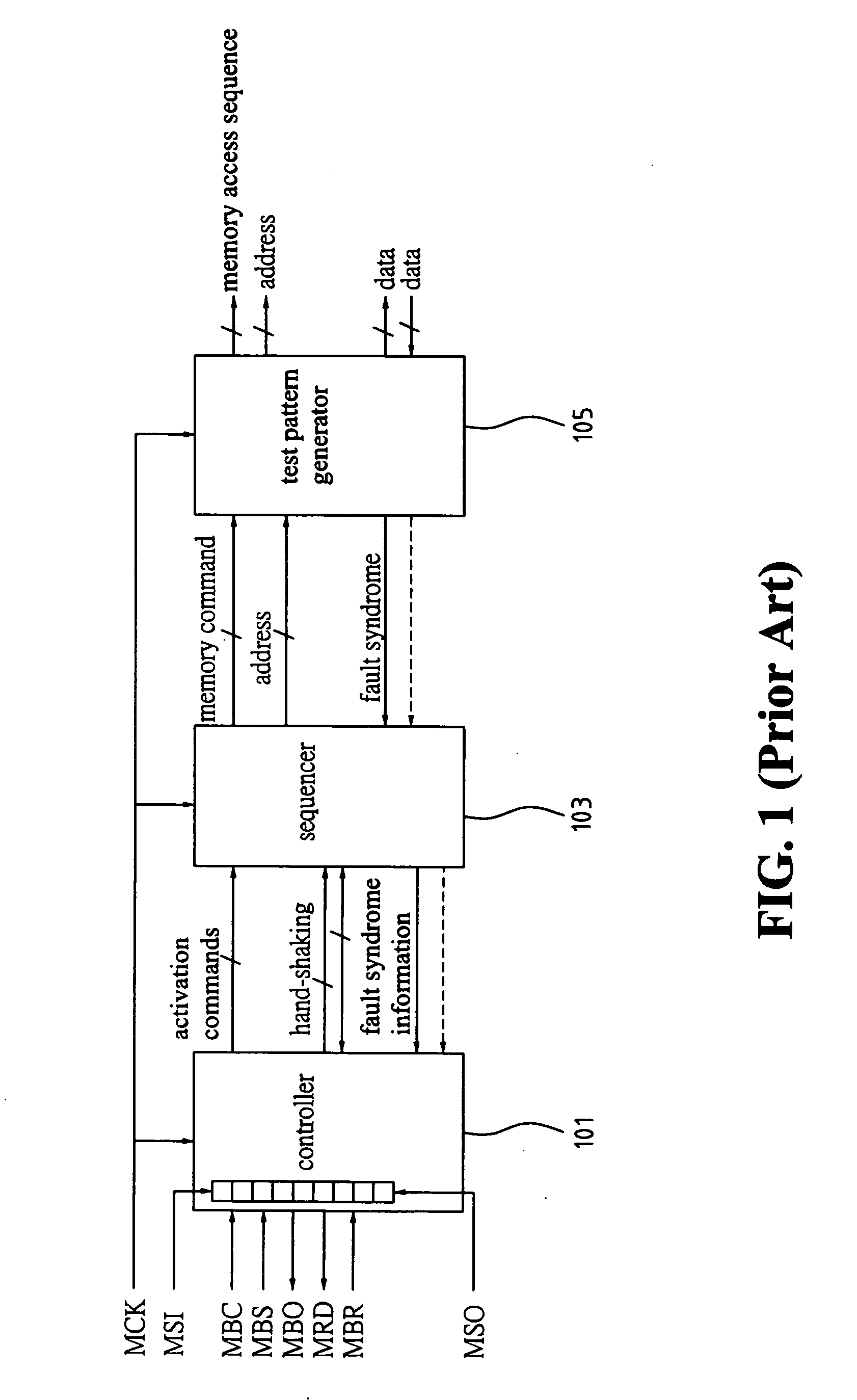Method and apparatus of build-in self-diagnosis and repair in a memory with syndrome identification
a memory and syndrome technology, applied in the field of syndrome identification for memory testing, can solve the problems of inability to easily access external circuitry, inability to store diagnostic data of faulty memory cores in automatic test equipment (ate), and poor yield of soc chips, so as to reduce the occupation time and the required capture memory space of the ate, and simplify the analysis performed.
- Summary
- Abstract
- Description
- Claims
- Application Information
AI Technical Summary
Benefits of technology
Problems solved by technology
Method used
Image
Examples
Embodiment Construction
[0040]FIG. 3 depicts a schematic diagram illustrating the method of BISD / R in a memory with syndrome identification according to the invention. It comprises two major steps, 301 and 303. It uses a fail-pattern identification and a syndrome-format structure to identify faulty rows, faulty columns and single faulty word in the memory during the testing process, as shown in step 301. Then, the syndrome information is generated and exported. Based on the syndrome information, a redundancy analysis algorithm is applied and spare memory elements are allocated to repair the faulty memory cells, as shown in step 303.
[0041] The fail-pattern identification and the syndrome-format structure used in step 301 are further described in detail in the following. FIG. 4 shows a memory array under test. The shaded region in the left diagram is the word under test (WUT), representing word 0. The adjacent word 1 on the right is said to be in the same row as the word 0. The adjacent words 2 and 3, locat...
PUM
 Login to View More
Login to View More Abstract
Description
Claims
Application Information
 Login to View More
Login to View More - R&D
- Intellectual Property
- Life Sciences
- Materials
- Tech Scout
- Unparalleled Data Quality
- Higher Quality Content
- 60% Fewer Hallucinations
Browse by: Latest US Patents, China's latest patents, Technical Efficacy Thesaurus, Application Domain, Technology Topic, Popular Technical Reports.
© 2025 PatSnap. All rights reserved.Legal|Privacy policy|Modern Slavery Act Transparency Statement|Sitemap|About US| Contact US: help@patsnap.com



